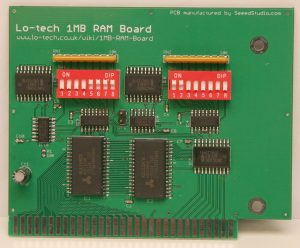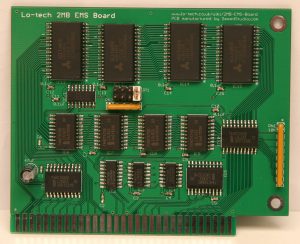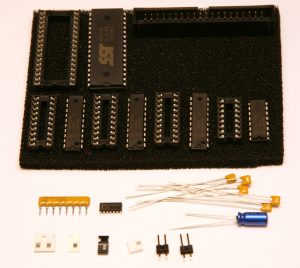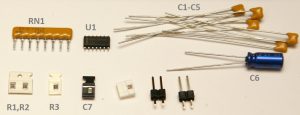RAM chips in early 1980’s PCs are a fairly regular cause of problems, and then there’s the issue of only have some meager amount of RAM installed on the system board, as little as 16KB on the first IBM 5150.
Mostly RAM is expanded up to the maximum (usually 640KB) via a multi-function ISA expansion card, but these boards don’t provide upper memory blocks (above 640KB) nor generally EMS, a memory expansion technology for 8088/8086 PCs providing up to 32MB defined by Lotus, Intel and Microsoft. For that, something like an Intel AboveBoard is required, which is a full-length and now rare card.
So, enter two new lo-tech PCBs, both built on AS6C4008 4Mb SRAM chips:
The lo-tech 1MB RAM board, providing from 48KB to 1MB of system RAM, with each 64KB page individually switchable to provide a universal expansion board for any 8-bit PC, regardless of how much RAM is installed on the system board. The first 16KB can also be switched off, enabling its use with a stock 16KB 5150.
The lo-tech 2MB EMS board, providing from 512KB to 2MB of LIM 3.2 expanded (EMS) memory (available capacity is dependent on how many SRAM chips are populated). Applications like Lotus 1-2-3 and Windows 2.x and 3.0 will use EMS when available.
Both boards are built on 1.27mm pitch SMT components in order to fit everything on the available 80x100mm Eagle Lite routing area. Assembly of these components is perfectly acheivable at home – see the lo-tech SMT soldering guide.
These boards are both in first-prototype testing phase and so should not yet be considered fully functional; some refinements are likely in future revisions. Initial test results have though been positive – using the lo-tech test-bench IBM 5155:
- The RAM board is detected as configured on the DIP switches and the machine is able to run through Trixter’s 8088 Corruption (which utilises all available RAM) without issue
- The EMS board is correctly identified by a low-level test routine and passes basic page register and fill operation tests
But, more test hours are needed and the driver for the EMS board is yet to be written – that’s work-in-progress!




